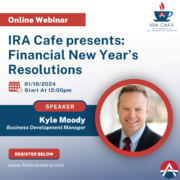Little-Known Self-Directed Roth IRA Tidbits
Little-Known Self-Directed Roth IRA Tidbits
The Self-Directed Roth IRA is one of the most powerful tools for retirement investing available in the United States. You may already be familiar with why that is. Roth IRAs let you put aside after-tax money, which means that when you take qualified distributions from the Roth IRAs later in life, you don’t have to pay additional tax on them. This means that you can build up a tremendous amount of retirement wealth and not have to worry about additional taxes when it comes time to use that wealth. And in that one advantage is an entire world of possibilities.
But there may be all sorts of other little Self-Directed Roth IRA tidbits you’re not aware of. To figure out what those are, let’s explore just a few.
Real Estate Investing in a Self-Directed Roth IRA
One of the most popular reasons to use a Roth IRA is that investors can use self-direction to invest in a wider range of retirement assets. And one of the most popular alternative asset classes is that of real estate. Real estate typically refers to raw land or single- or multi-family units that one can rent, although there are all sorts of options possible for the Self-Directed Roth IRA investor. And using non-recourse loans, an investor can potentially invest in real estate with more leverage than they anticipate.
Let’s consider how this might work within a Self-Directed Roth IRA. If you were to buy a home within a Self-Directed Roth IRA and then later sell it at a profit—all doing it within the umbrella of the Roth IRA—then that profit would go straight to the IRA. You could then keep it there and use it for other investments—only taking distributions upon reaching retirement age. And since qualified distributions are tax-free, you would then have tax-free profits possible because of the Self-Directed IRA.
The same is true for rent you might collect to a Roth IRA through a property manager. Some people don’t simply buy and sell real estate within a Self-Directed IRA, but instead use a property manager to collect the rent directly into the IRA. This rent then becomes the Roth IRA’s money—a return on the post-tax contributions you initially put into the IRA itself.
Avoiding Prohibited Transactions
Reading all of the above can be downright exciting for any investor who has experience with real estate and wants to use the protections of a Roth IRA. However, there are some special retirement investing rules of which you’ll want to be aware. And these rules can be some of the most important “tidbits” you ever learn about the Roth IRA.
For instance, you may be subject to a penalty tax on a transaction if that transaction was prohibited—such as transacting with a disqualified person. That means that if you were to buy a rental property with a Roth IRA and then rent out that property to someone you know, such as a spouse or a family member, then that would create taxes and penalties. After all, it’s a bit like you took an early distribution on the account, since you’re incurring personal benefits. Instead, keep your IRA account investments separate from your personal investments—and you’ll generally do well.
For more information about how it all works, we encourage you to read about all of the Self-Directed IRAs available. Here at American IRA, we feature information about a wide range of accounts and asset classes. To reach out to us, be sure to call us by dialing our number at 866-7500-IRA today.
Want more information on the benefits of investing in a Self-Directed IRA? Visit: The Benefits of Investing in a Self-Directed Roth IRA | American IRA






